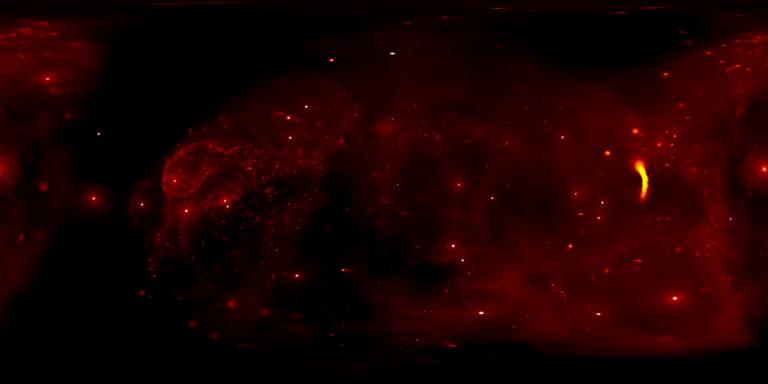 News
NewsAll-round astronomy on your computer
Images have long been a powerful tool for both understanding and sharing understanding of the universe. But big data and better computing power means that you can now explore in three dimensions.
 News
NewsImages have long been a powerful tool for both understanding and sharing understanding of the universe. But big data and better computing power means that you can now explore in three dimensions.

Images have long been a powerful tool for both understanding and sharing understanding of the universe. But big data and better computing power means that you can now explore in three dimensions.
Armchair explorers of the universe can now navigate their way through a 360° movie of the central region of the MIlky Way galaxy, a simulation based on data from NASA's Chandra X-ray Observatory and the European Southern Observatory's Very Large Telescope. Infra-red data from the VLT show 25 Wolf-Rayet stars within 1.5 light years of the supermassive black hole at the centre of our galaxy. The winds from these massive stars spread out, shocking and heating the gas already present between them; tidal forces distort clumps of this multimillion degree gas and some of it accretes around the central black hole. The researchers who produced the simulation are interested in how the activity of the black hole affects the gas around it, specifically in the way that stronger outbursts for the black hole seem to reduce accretion rates and the consequent X-ray emission. Explore for yourselves at the Chandra website or on YouTube.
If you would like to submit an article to A&G Forum then please go here.